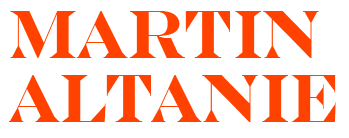Type: Thesis Project / Product Design & Physical-Computing
Role: Research, Concept, Design, Prototyping, Video Storytelling
Team: Solo
Timeline: 8 weeks
Institution: Copenhagen Institute of Interaction Design (CIID)
Role: Research, Concept, Design, Prototyping, Video Storytelling
Team: Solo
Timeline: 8 weeks
Institution: Copenhagen Institute of Interaction Design (CIID)
🔍 Executive Summary
Ballrum is a hybrid platform that gives teachers a safe, expressive way to externalize stress, communicate frustrations, and connect with school management. It combines a mobile/web app feed with a physical, glowing stress-ball that tracks both personal and collective tension. The design helps school leadership sense and prioritize emotional pain points, and offers reflective tools (exercises, games) to support teacher well-being.
🧠 Context & Challenge
Teacher burnout is a pervasive problem: overwhelming workloads, difficult interactions, and a sense of being unheard contribute to emotional fatigue. In schools, management often lacks visibility into the teachers’ emotional states and recurring systemic issues.
Design Question:
How might we create a system where teachers can safely express frustration, surface collective stress, and be heard, while school management gains actionable insight to respond?
🔬 Research & Insights
- Interviewed 6 teachers, 2 principals, 1 curriculum coordinator, and 2 education experts to understand daily stressors, pain points and ecosystem relationships between all stakeholders.
- Conducted social listening via teacher-forums and Reddit to understand how teachers currently vent and share peer support.
- Surveyed teachers to assess their comfort with anonymity, feedback, and how they would like to interact with peers and management.
- Conducted social listening via teacher-forums and Reddit to understand how teachers currently vent and share peer support.
- Surveyed teachers to assess their comfort with anonymity, feedback, and how they would like to interact with peers and management.
Key insights emerged:
- Many teachers feel unheard and lack of support system from the management.
- Management wants to support teachers, but often struggles to identify which issues are most urgent.
- Management wants to support teachers, but often struggles to identify which issues are most urgent.
💡 Design Solution
Core Concept
Ballrum is a digital + physical system designed to make teachers’ emotional states visible and actionable to themselves, their peers, and management.
App Feed
Teachers post about stress or problems, categorize their feelings, and vote/comment on others’ posts. Popular posts grow visually (bubble-like), signaling to management what’s most urgent.
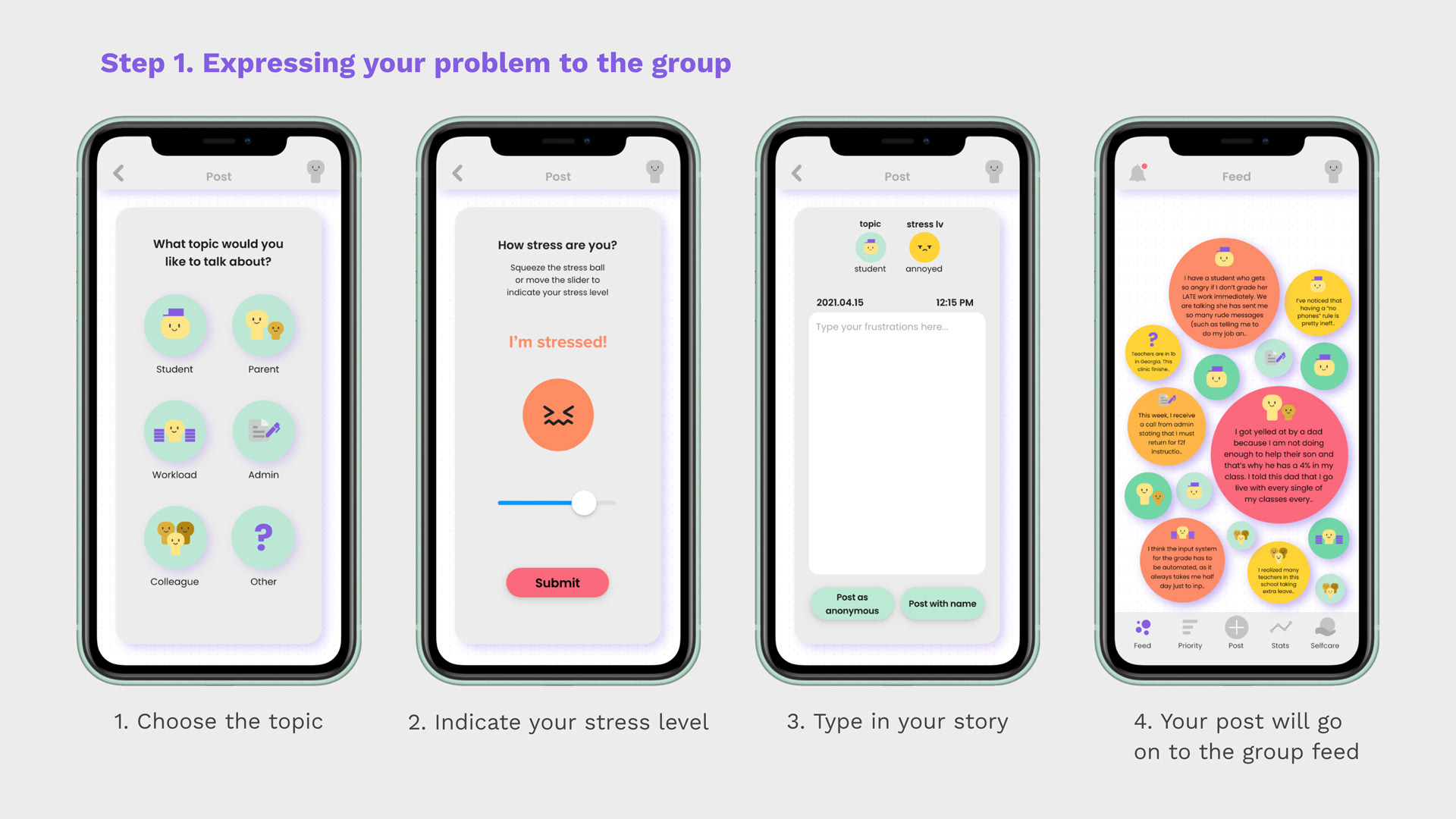
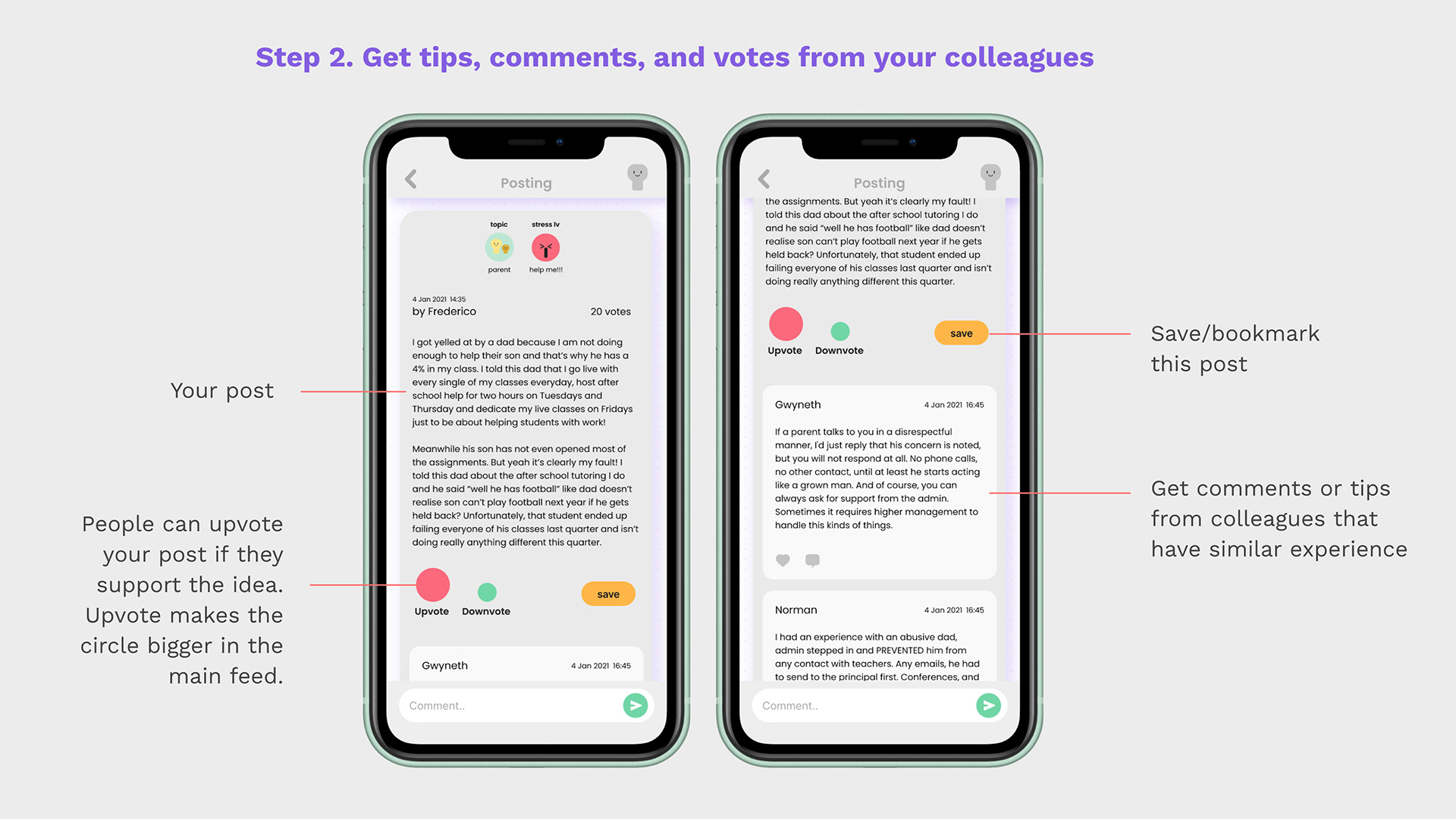

Stress Ball
The app comes with a glowing stress ball to help teachers externalize their feelings physically. It records teachers' individual and collective usage data which gives the management indication of the overall frustration level of the team.
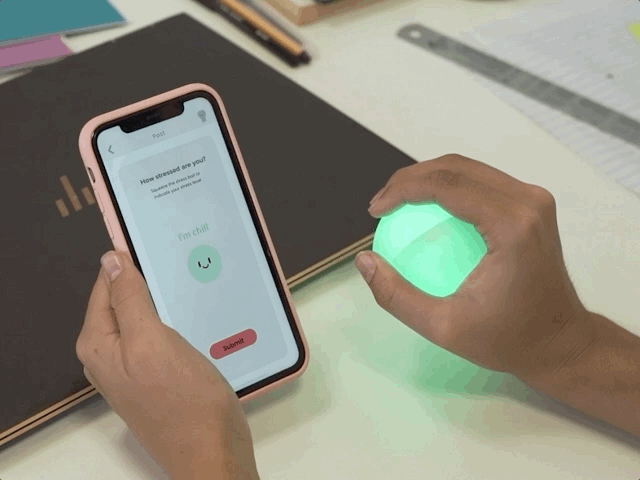
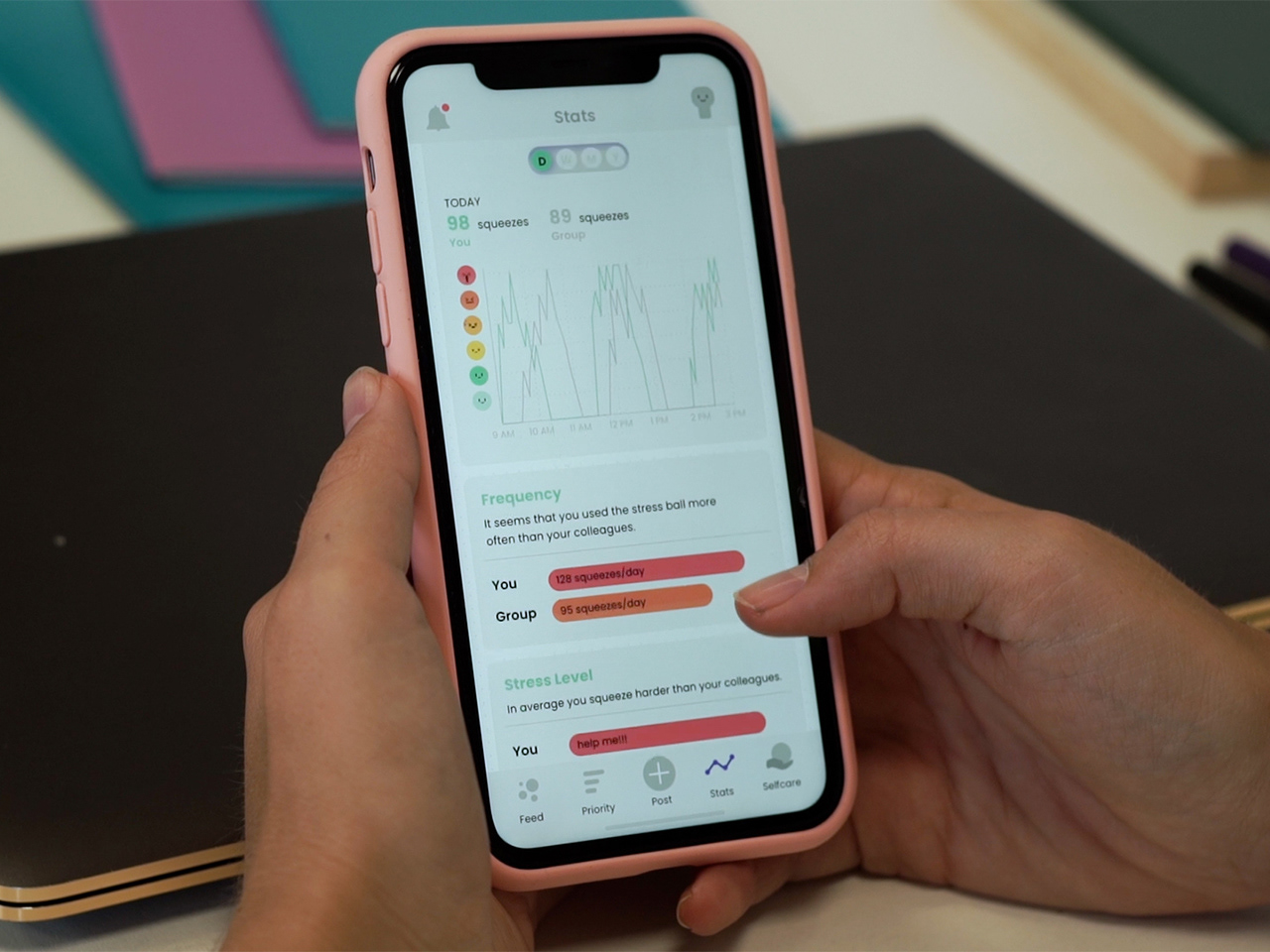
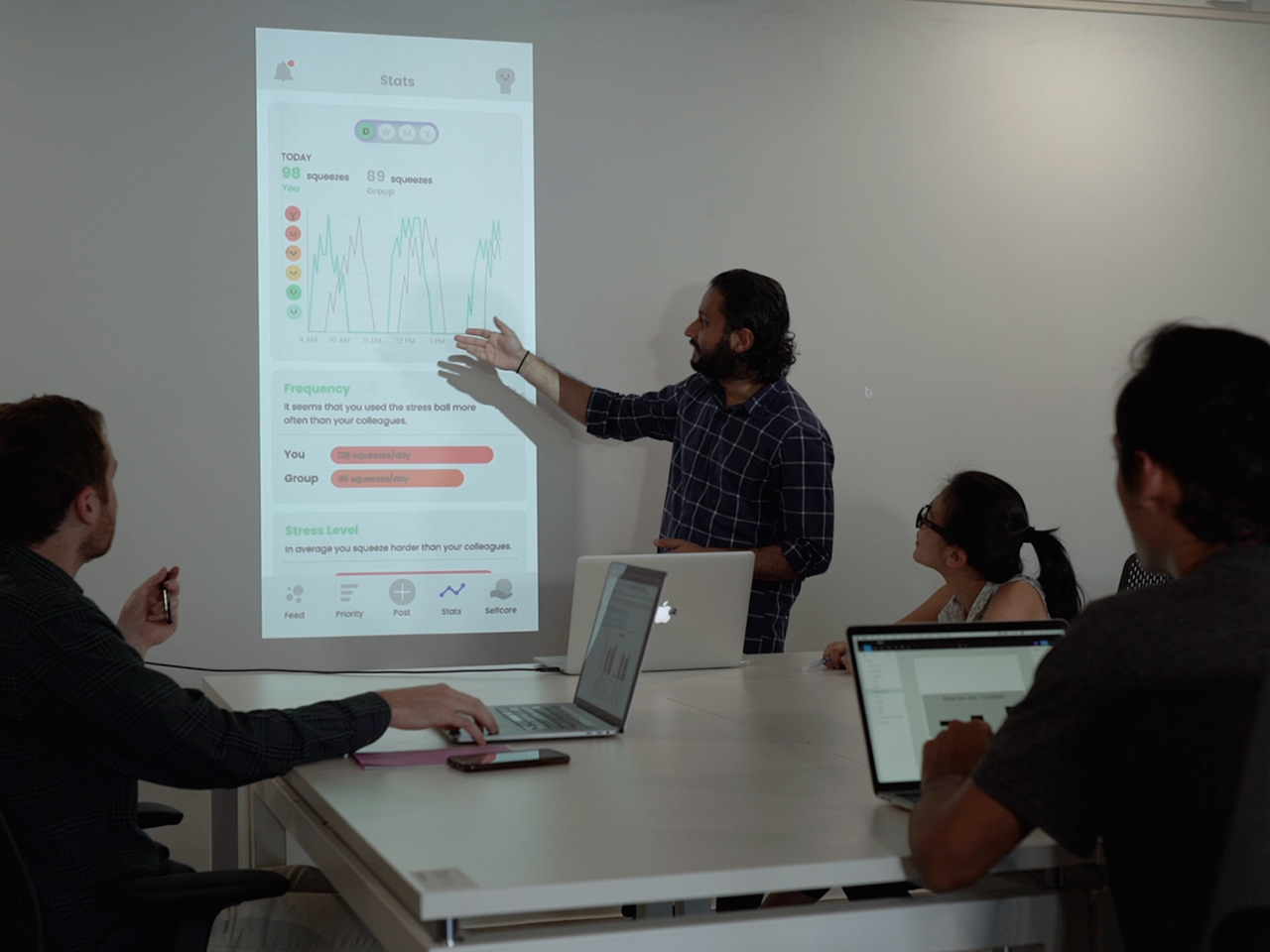
Support Tools
In-app downloadable exercises and games help teachers manage and reflect on their emotional state.
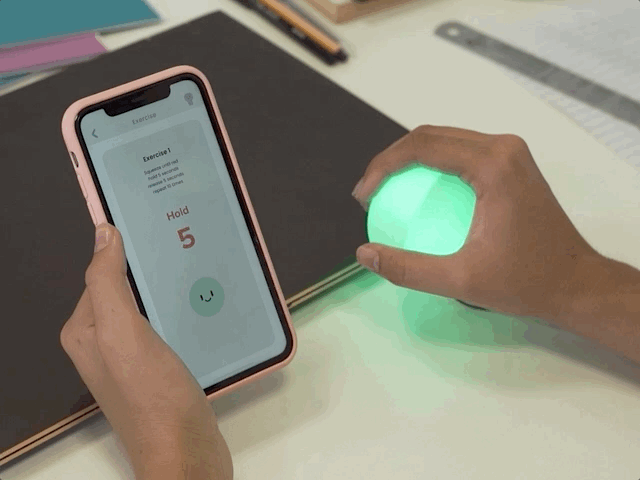
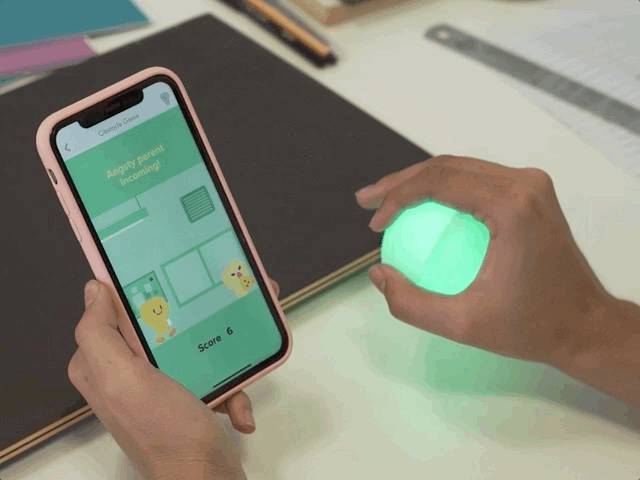
🔬 Design Process
Discovery
- Interviews with teachers & school stakeholders
- Surveys and social listening in teachers forums
- Synthesized insights into a core "How Might We" statement
- Surveys and social listening in teachers forums
- Synthesized insights into a core "How Might We" statement
How might we create a system where teachers can safely express frustration, surface collective stress, and be heard, while school management gains actionable insight to respond?
Ideation
In CIID we often brainstorm with a lot of people, the goal is to get as many ideas and point of views as we can. After that we can do internal brainstorming and synthesis to further any good ideas, or mix and match to come up with a new idea.
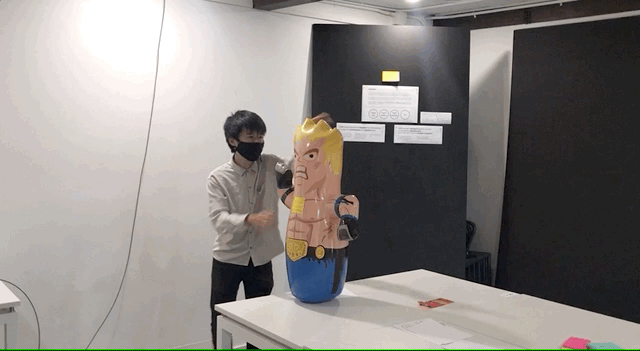
Bodystorming of stress-relieving mechanism
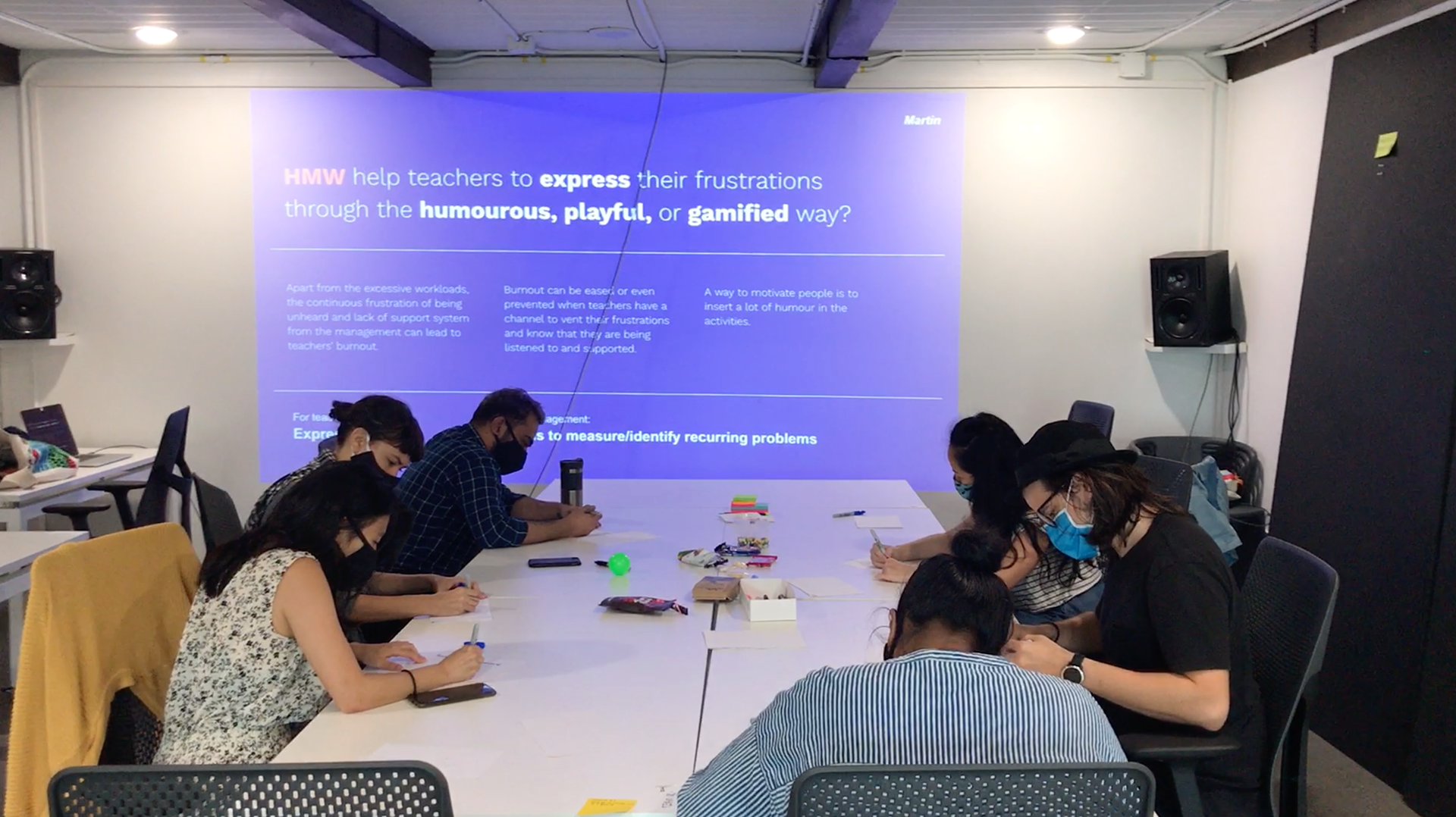
Collective ideation workshop
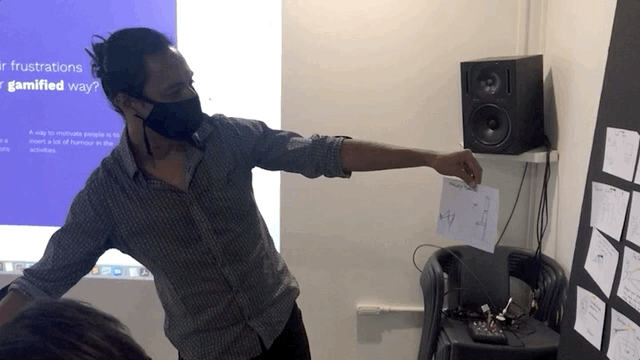
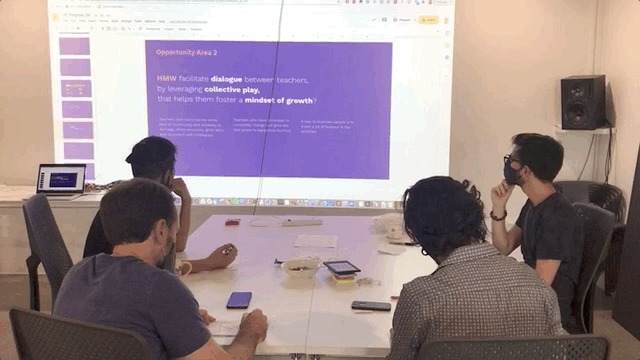
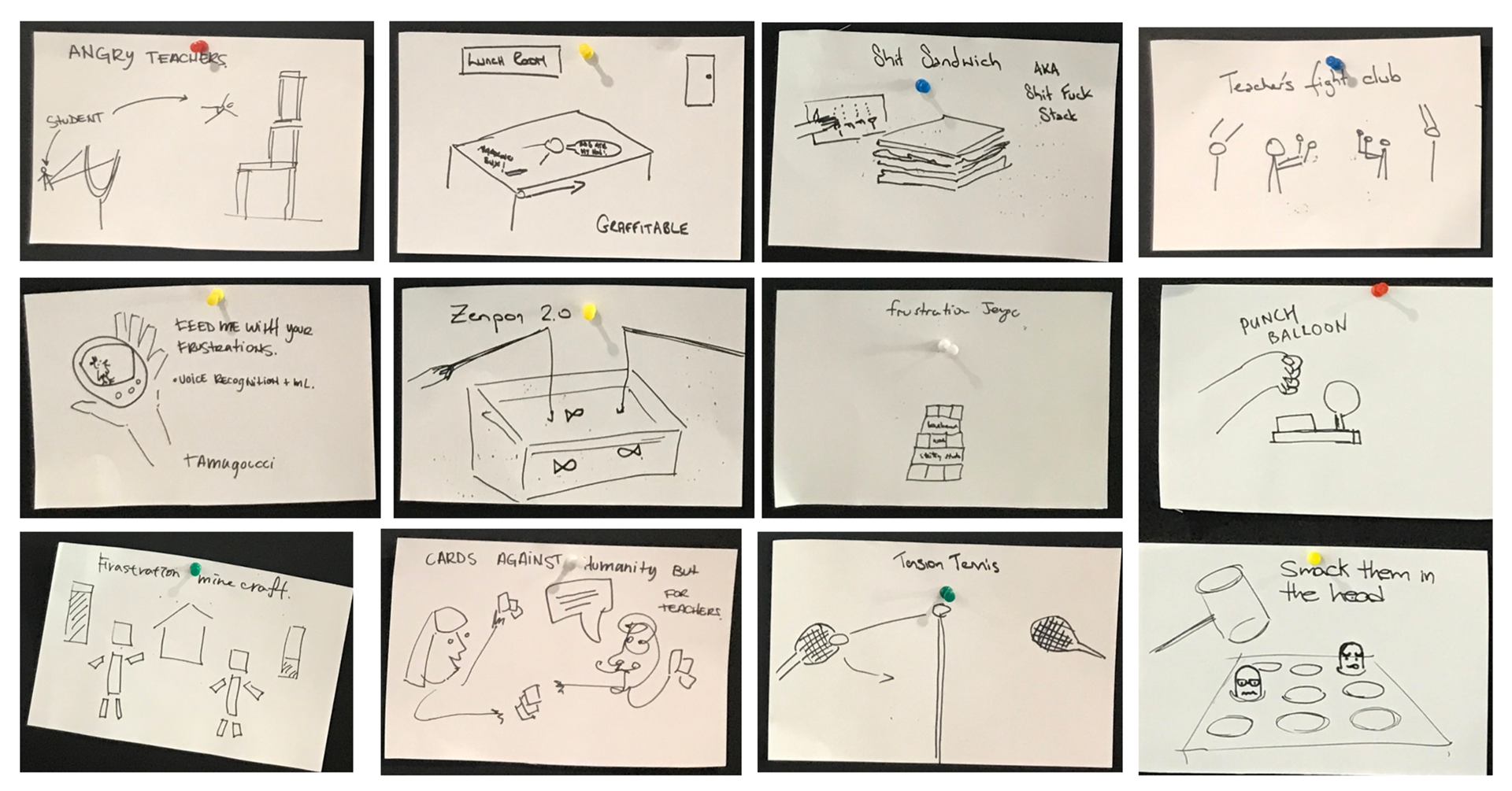
Participants' ideas
First few iterations of the idea, building on each others' ideas
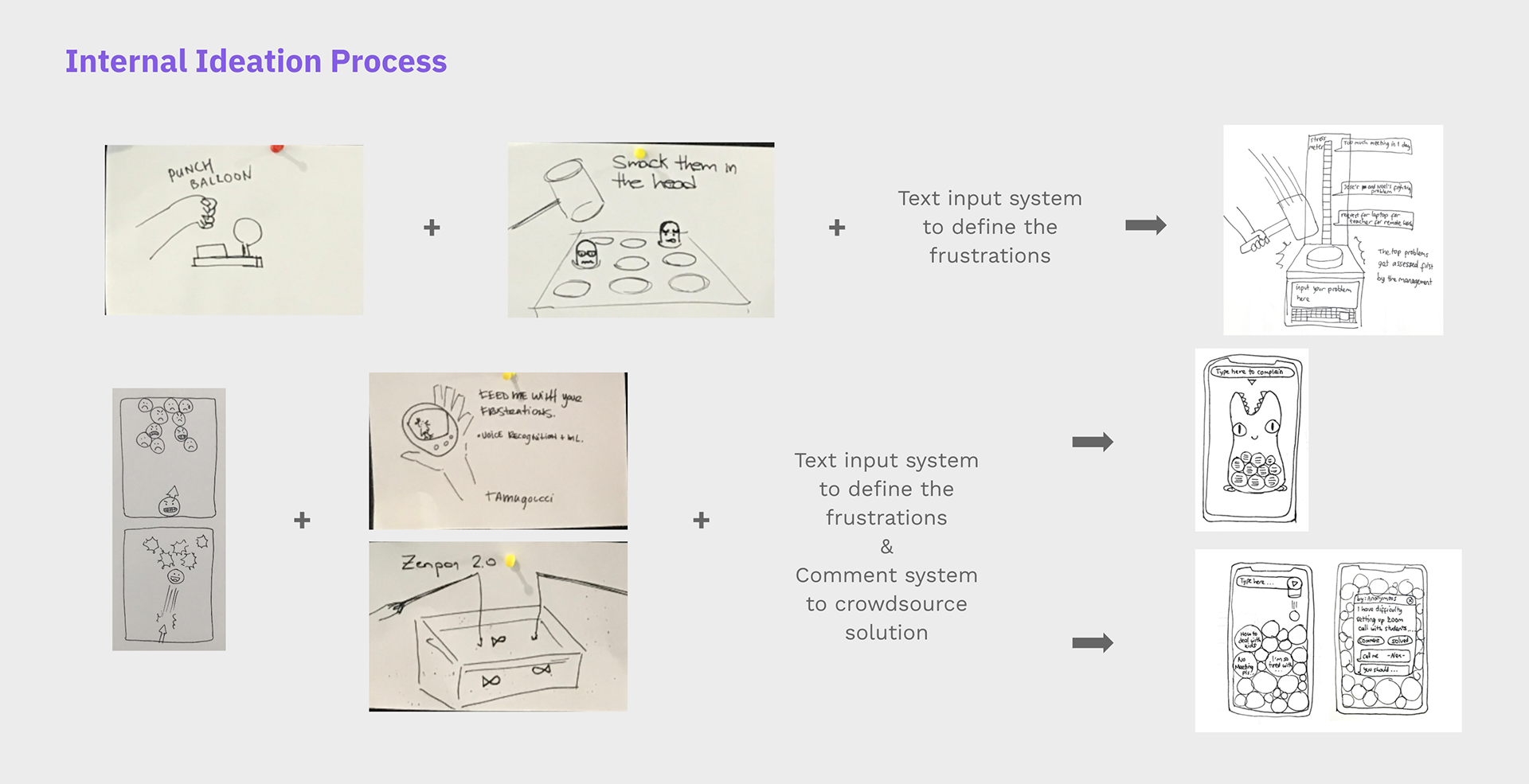
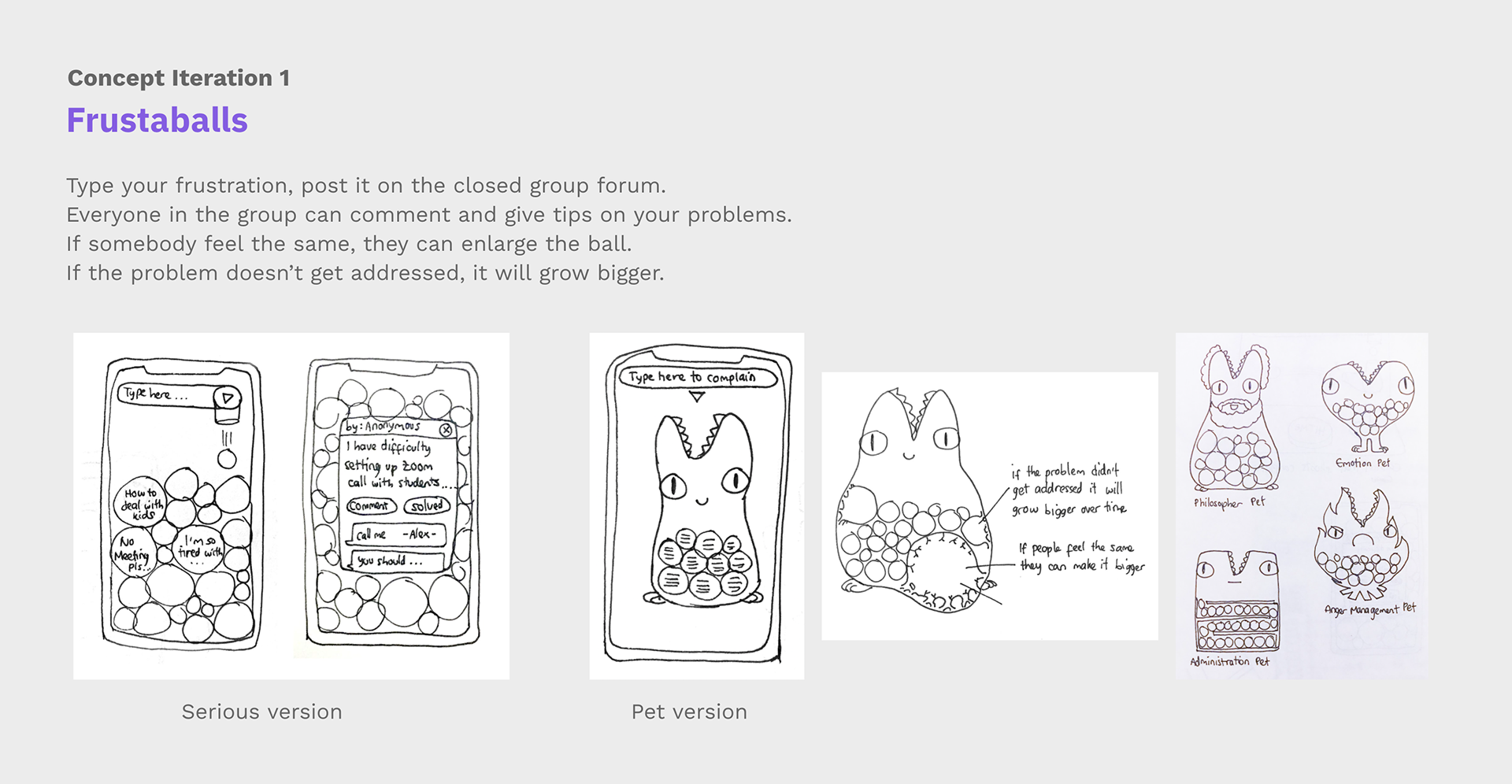
Back to research
At this stage, I realized the concept was evolving into a forum-like platform. To understand what elements would truly serve teachers, I conducted focused research on existing online communities.
I ran a short survey to gather teachers’ perspectives on what they value in forums and what frustrates them. In parallel, I did social listening in teacher subreddit groups to observe real conversations, posting patterns, and behaviours—helping me identify what design principles to adopt and what pitfalls to avoid.
I ran a short survey to gather teachers’ perspectives on what they value in forums and what frustrates them. In parallel, I did social listening in teacher subreddit groups to observe real conversations, posting patterns, and behaviours—helping me identify what design principles to adopt and what pitfalls to avoid.
Market Positioning
Mapping existing products on a 2×2 diagram revealed a clear gap in the market. While many wellness apps support general emotional journaling, none address the unique pressures teachers face. Conversely, most education apps focus on classroom productivity to track homework and share resources, leaving teachers’ own wellbeing underserved. This highlighted a strong opportunity space at the intersection of education and mental wellness.
Prototyping and User Testing
I began with a low-fidelity greyscale prototype in Figma to test the core interaction without visual distractions. I ran usability sessions with three teachers and also used a sacrificial concept to explore the idea of a physical stress ball as an input device, showing images and asking them to imagine using it alongside the app.
Key insights from testing:
- A character limit (similar to Twitter) helps prevent long, draining rants and keeps posts concise.
- A stress ball is an effective way for teachers to externalize emotions.
- A mood-check feature is essential and should offer guidance on managing the emotions surfaced.
- A stress ball is an effective way for teachers to externalize emotions.
- A mood-check feature is essential and should offer guidance on managing the emotions surfaced.
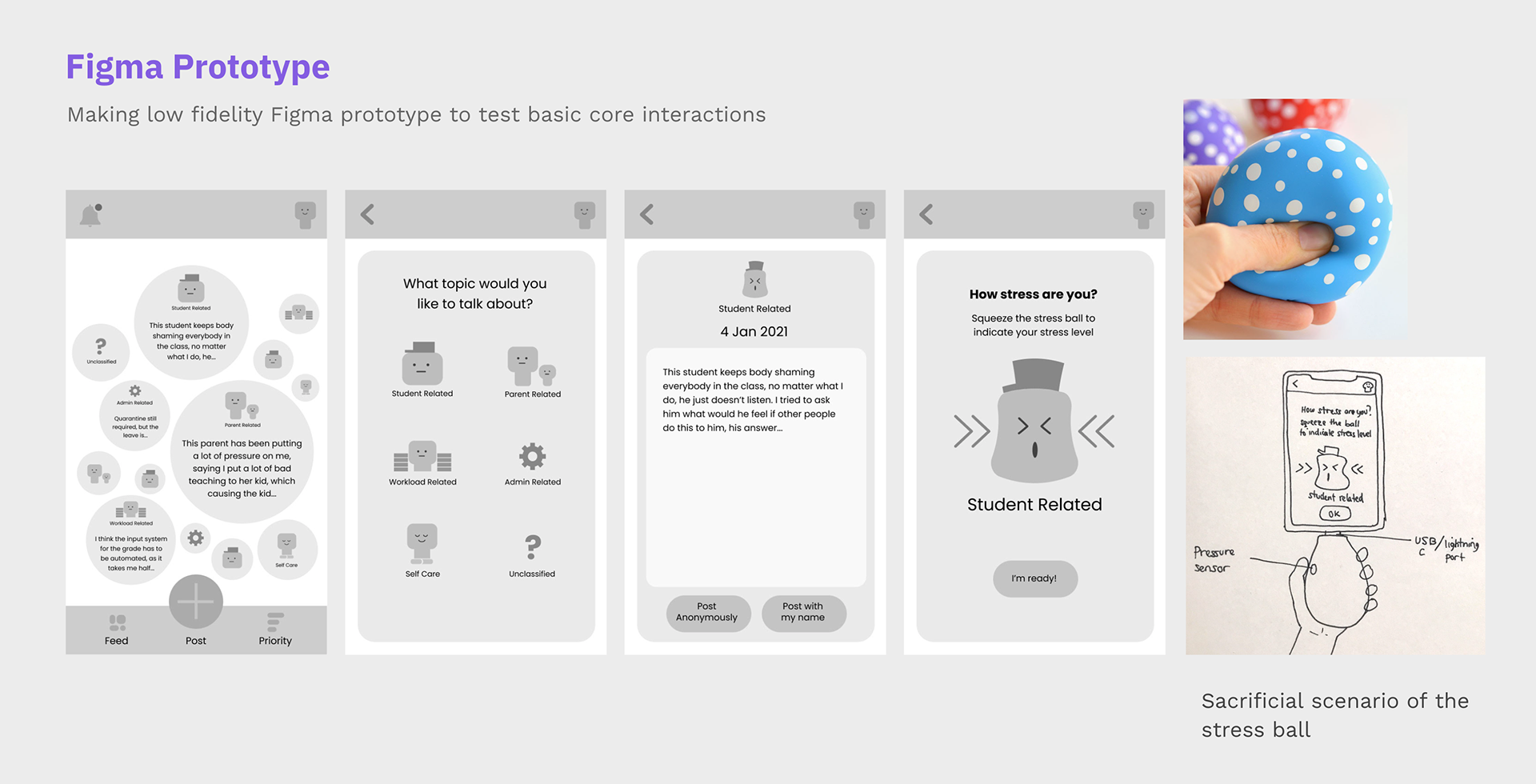
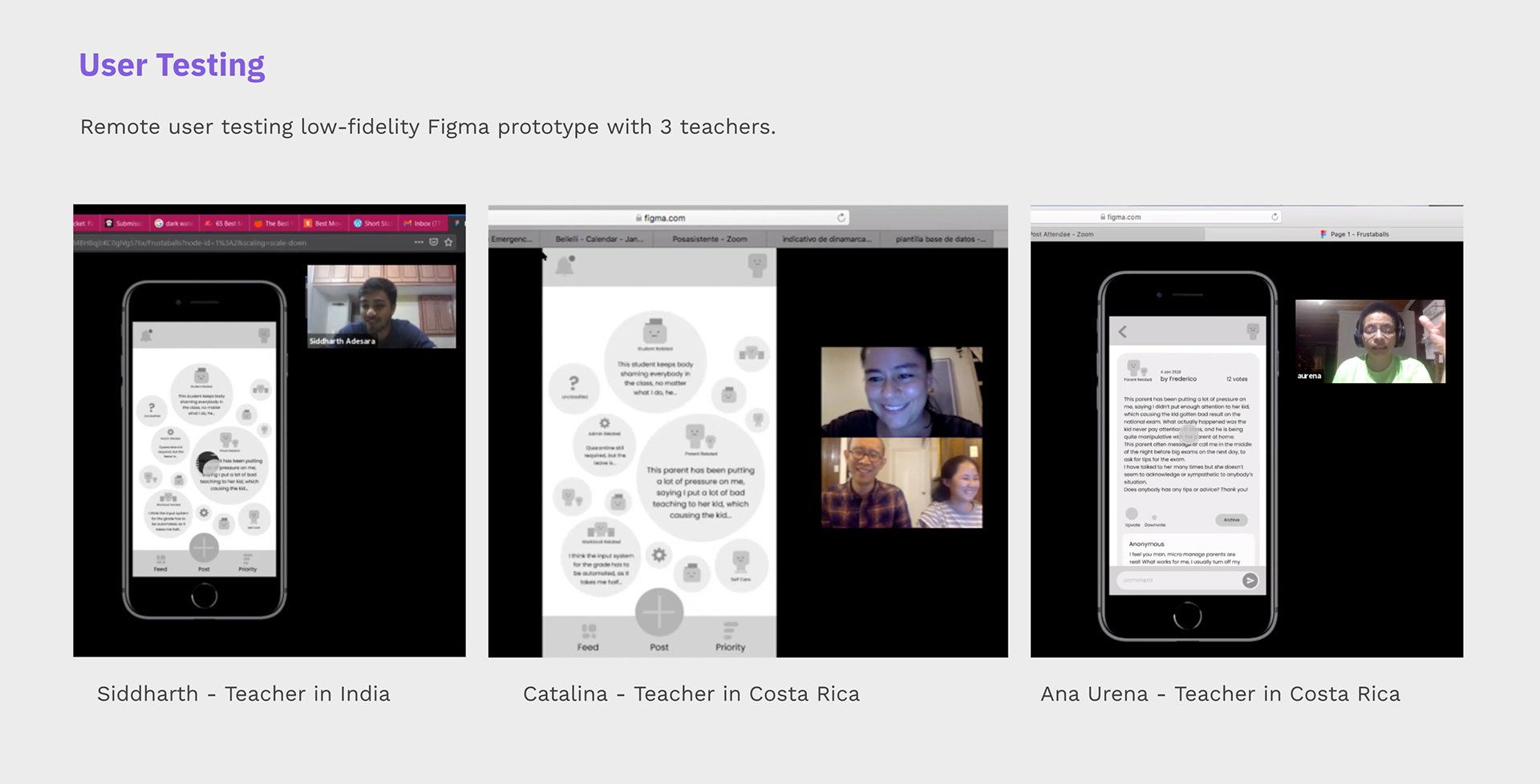
Building The Stressball
Based on the user testing feedback, I validated that a physical stress ball could meaningfully enhance the experience, so I moved into prototyping it.
Iteration 1: I created a crude form using masking tape, attached a velostat pressure sensor, wired it to an Arduino, and connected it to a P5.js sketch to test basic input.
Iteration 2: Once the interaction worked, I replaced the masking tape with an actual stress ball to test comfort and usability.
Iteration 3: I used Multiplayer.js to enable the P5.js sketch to communicate wirelessly with a mobile device, allowing the stress ball to function as a real-time controller for the app.
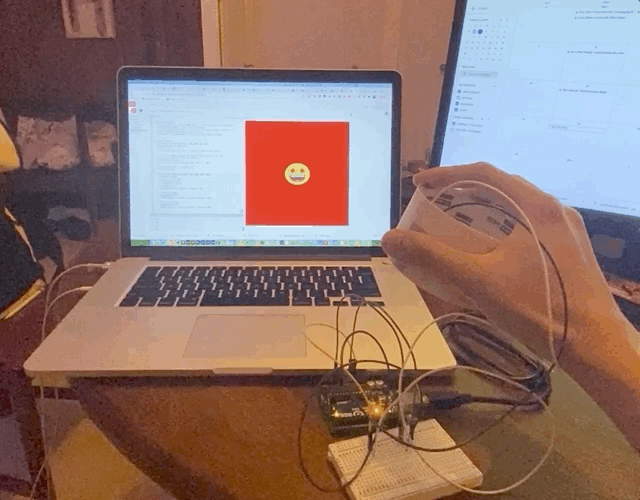
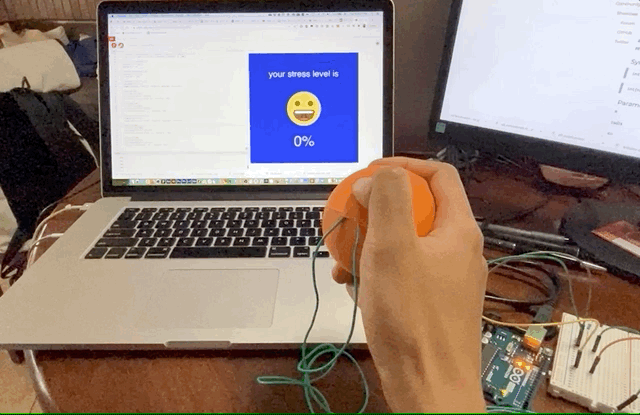
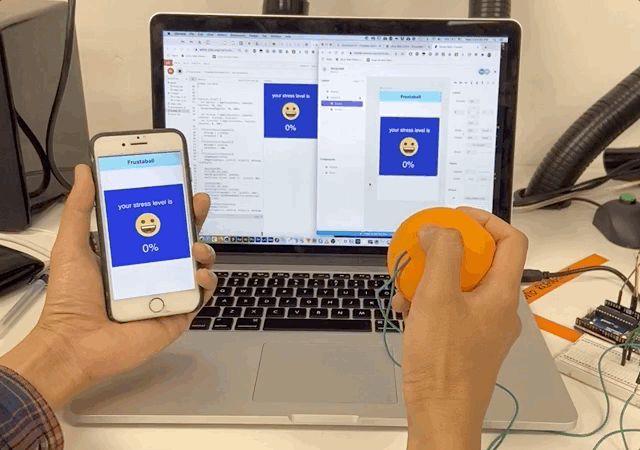
User-testing The Stressball
Continuous iteration is a core practice at CIID, so I conducted another round of user testing. This time focused specifically on how teachers felt about using the stress ball.
Key insights:
- The stress ball could capture meaningful interaction data (when, how hard, how long, and how often it’s used).
- Teachers saw it as a useful grounding tool for managing stress in the moment.
- It could also act as a feedback channel, glowing or vibrating when notifications arrive.
- Describing stress levels in words rather than percentages felt more emotionally accurate and intuitive.
- Teachers saw it as a useful grounding tool for managing stress in the moment.
- It could also act as a feedback channel, glowing or vibrating when notifications arrive.
- Describing stress levels in words rather than percentages felt more emotionally accurate and intuitive.
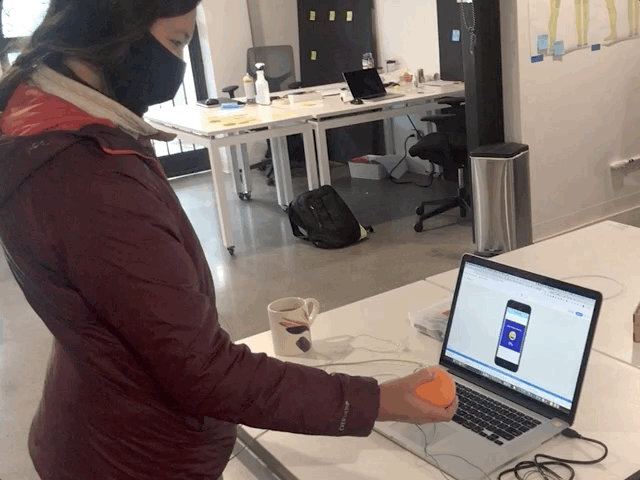
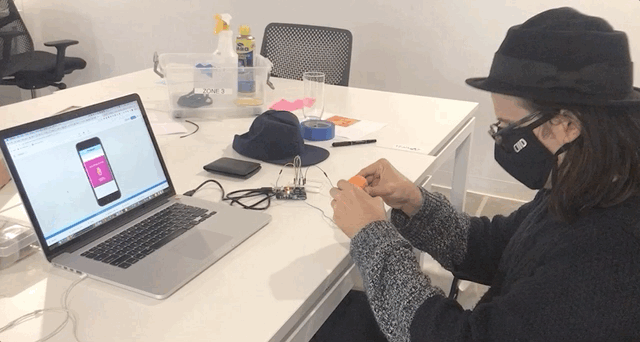
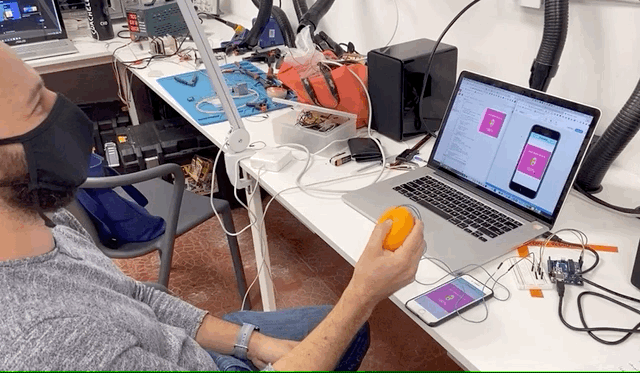
The Glowing Silicon
Building on the user-testing insights, I began exploring materials that would allow an LED to be embedded inside the stress ball. I experimented with several options and eventually landed on a soft silicone material that diffused light effectively. This phase involved creating my first custom mold 3D-printed and cast using a two-part silicone mixture. The final prototype was both functional and visually compelling, with the LED glowing cleanly through the material.
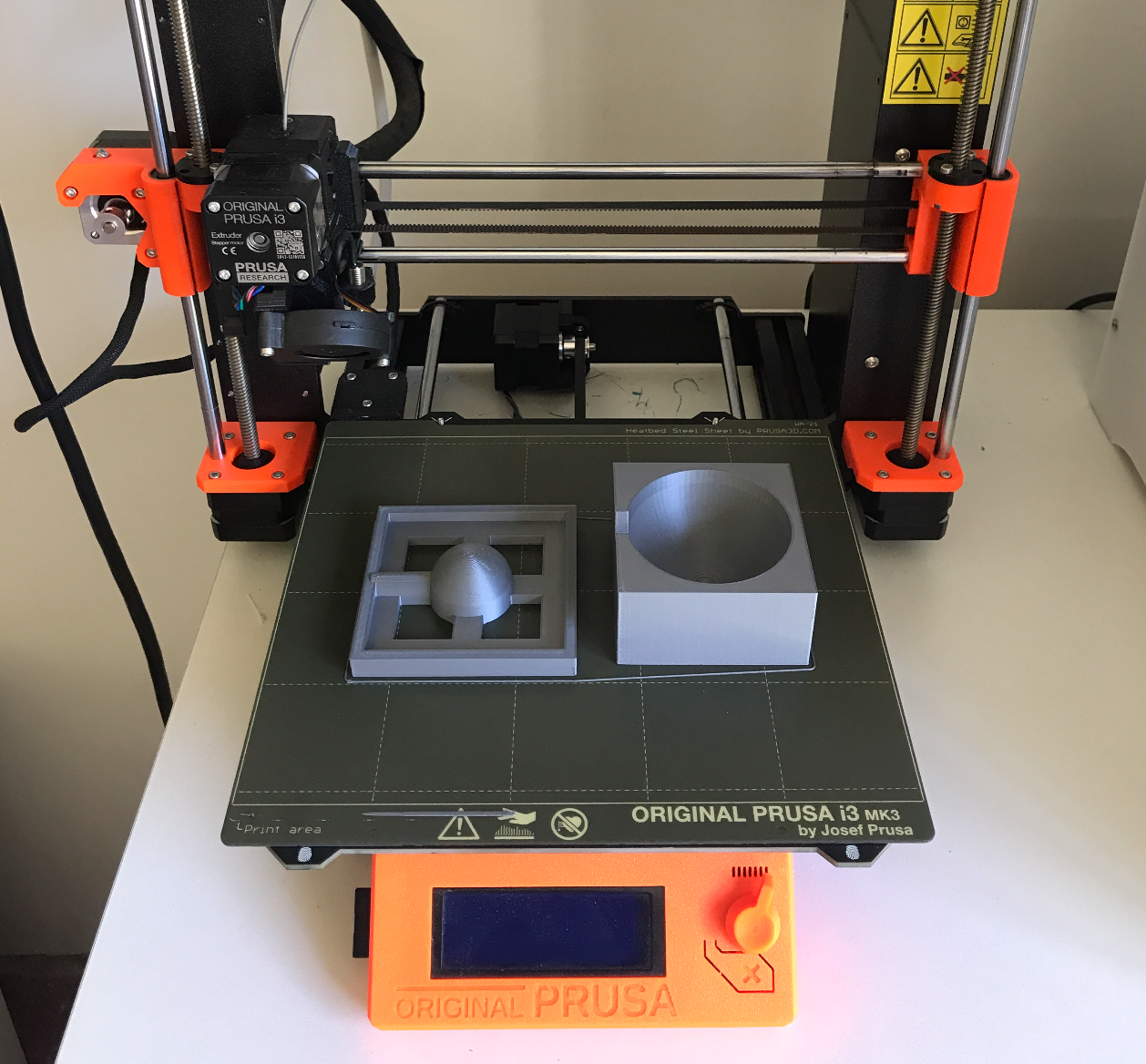
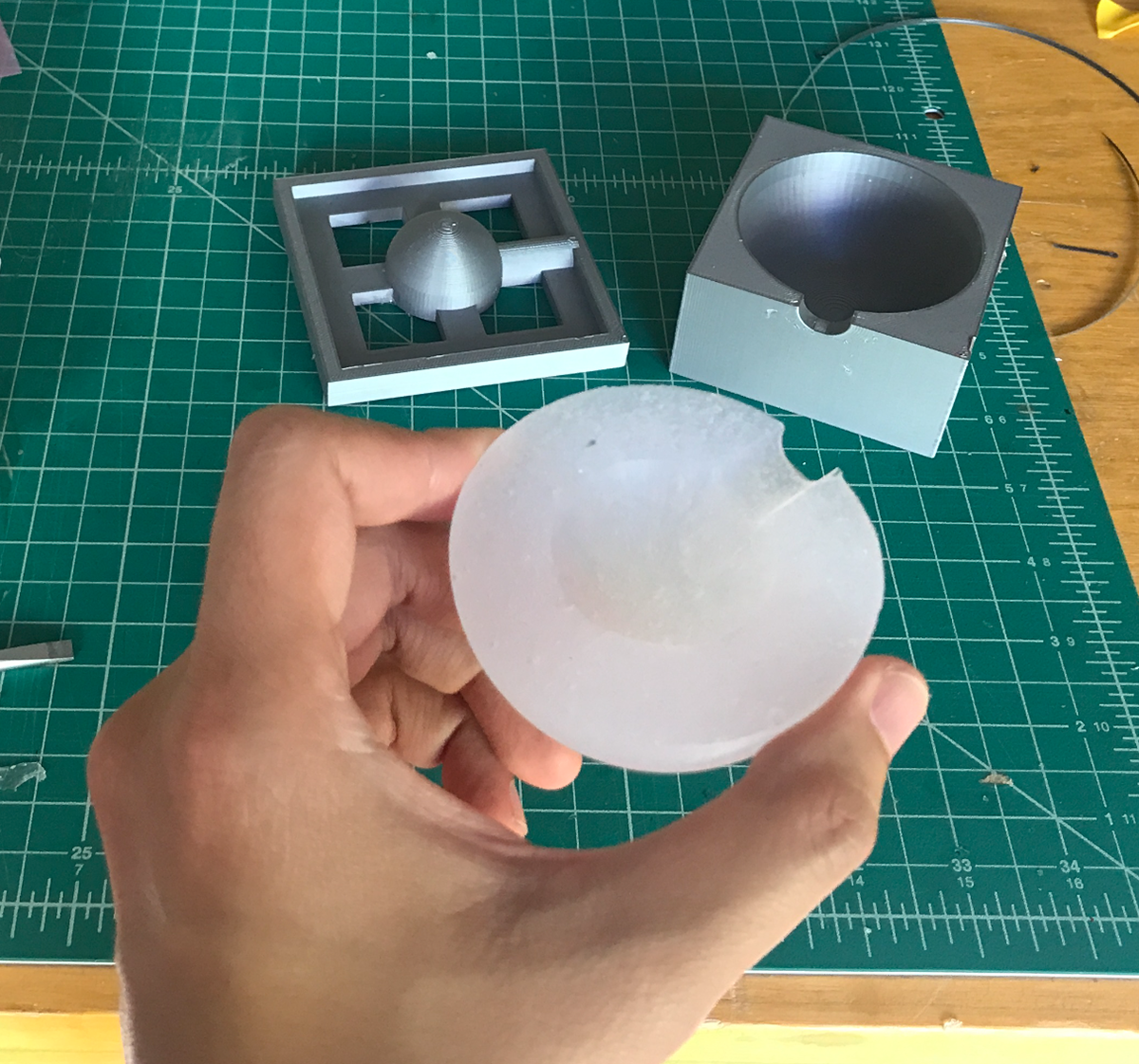
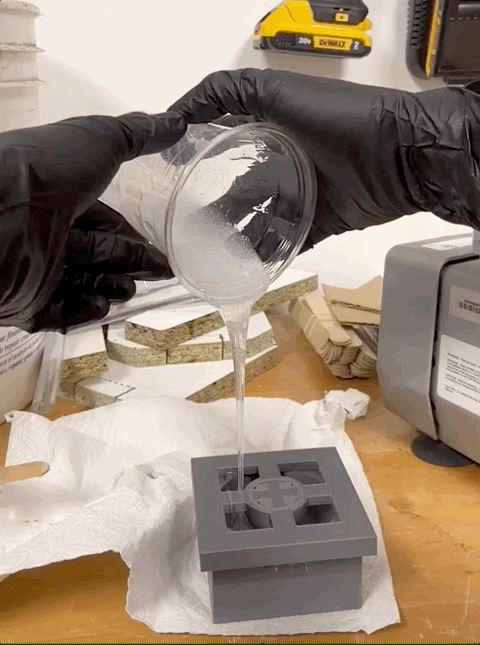
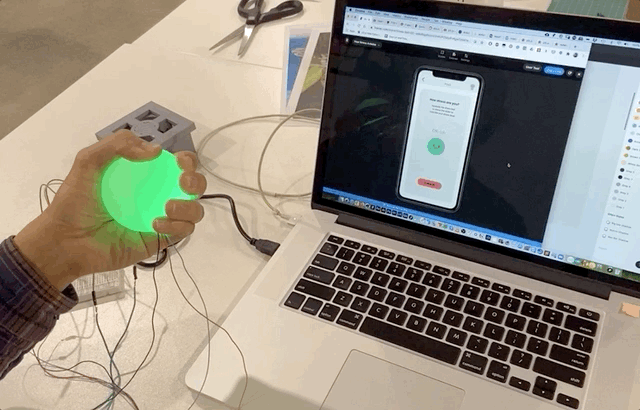
Visual Design
Next, I refined the app’s UI to ensure the visual language meaningfully reflected different emotional states. After testing color associations with users, I adopted an intuitive spectrum: green for calm, gradually shifting to red for high stress. Purple became the primary accent color for key actions, while the background remained neutral and greyscale to keep the interface focused and avoid visual noise.
Adding Micro Interaction
For the micro-interaction, I migrated the Figma design onto Framer, which allowed me to implement fancier interactions from P5.js sketch. The stress level slider animation was done in After Effects, which was exported onto Lottie file, and then embedded into Framer using iFrame plugin.
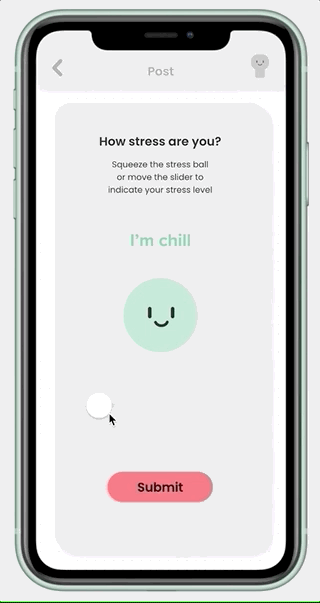
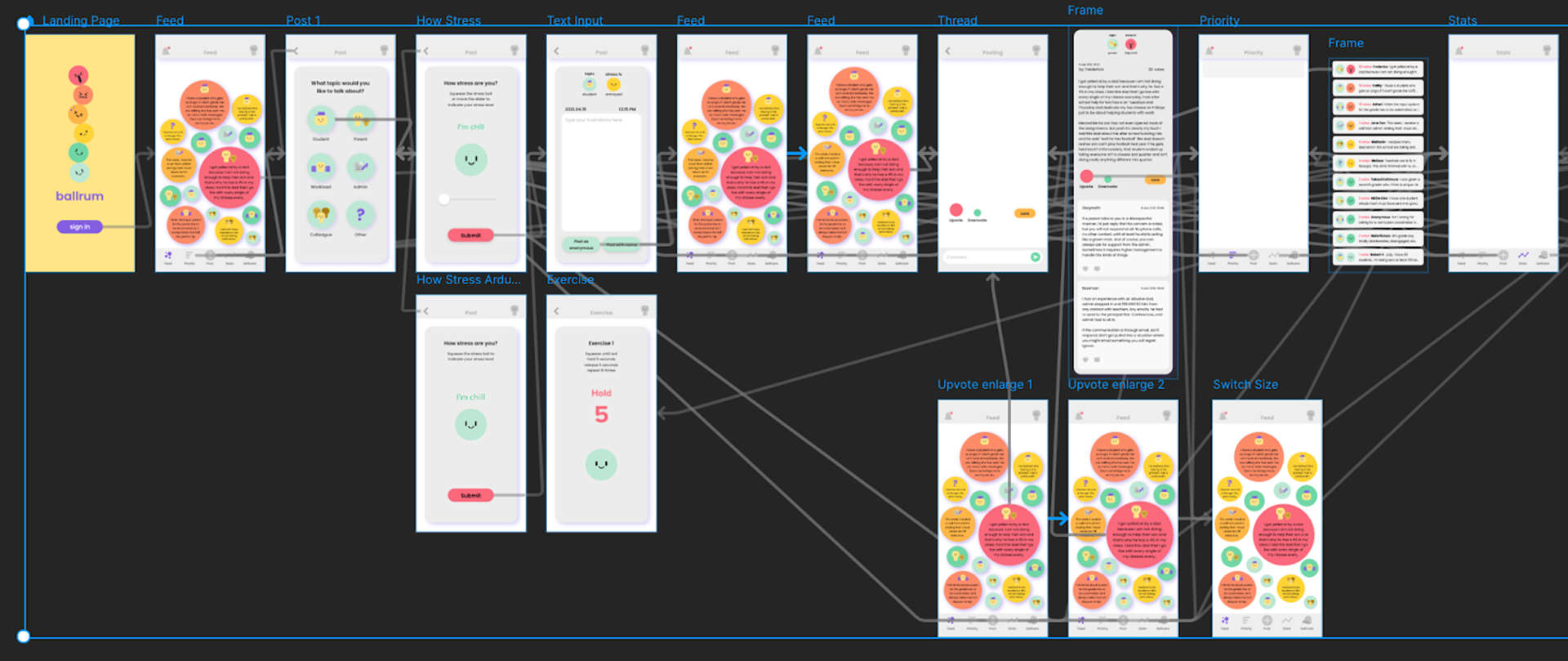
Game Development
The game development phase was one of the most enjoyable parts of the project and a great opportunity to deepen my P5.js skills. I designed all visual assets in Illustrator and explored animation styles in After Effects before translating the interactions into code. Rebuilding the animations and logic in P5.js allowed the game to become fully interactive, and by the end, I had a complete, fully functioning prototype.
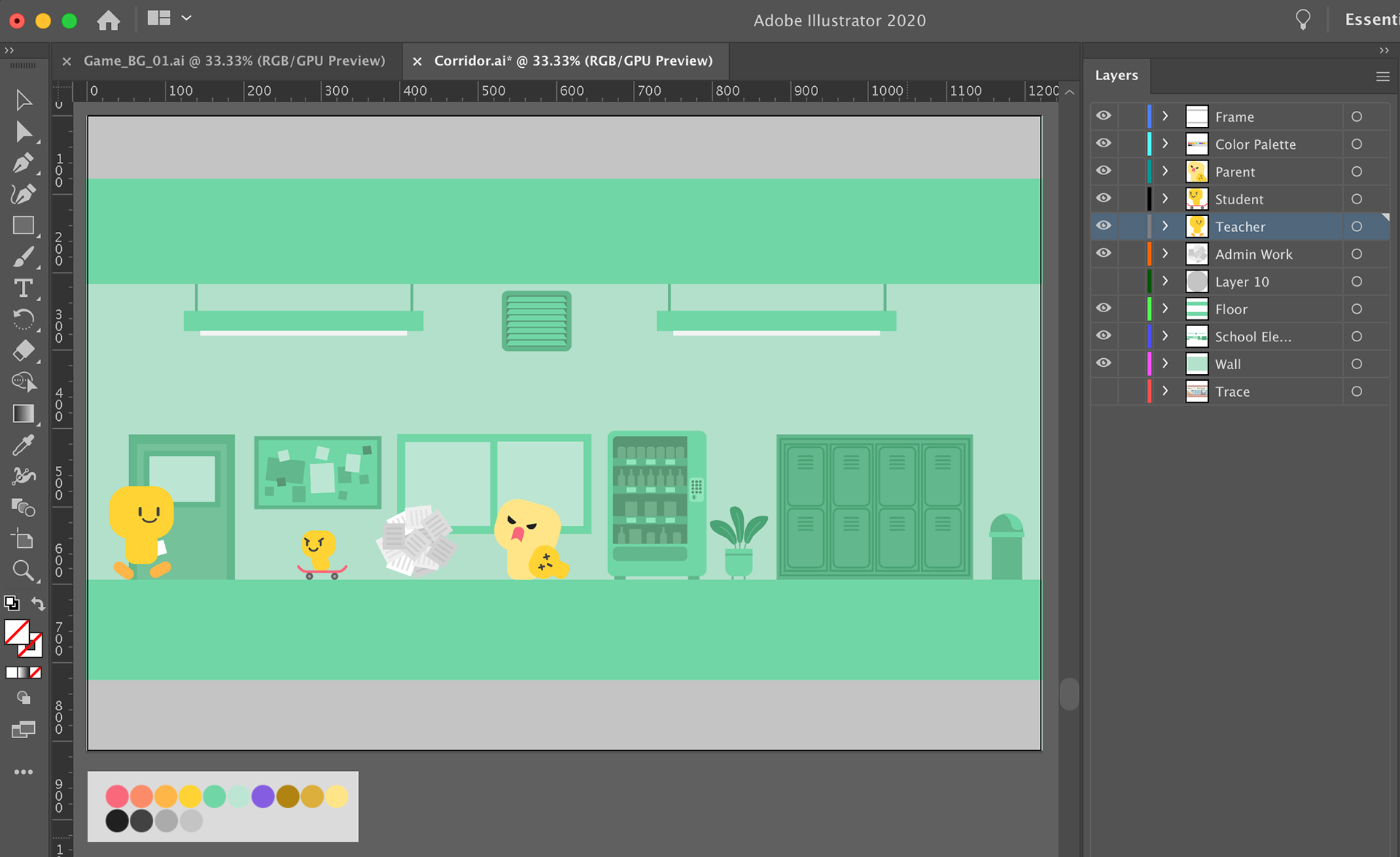
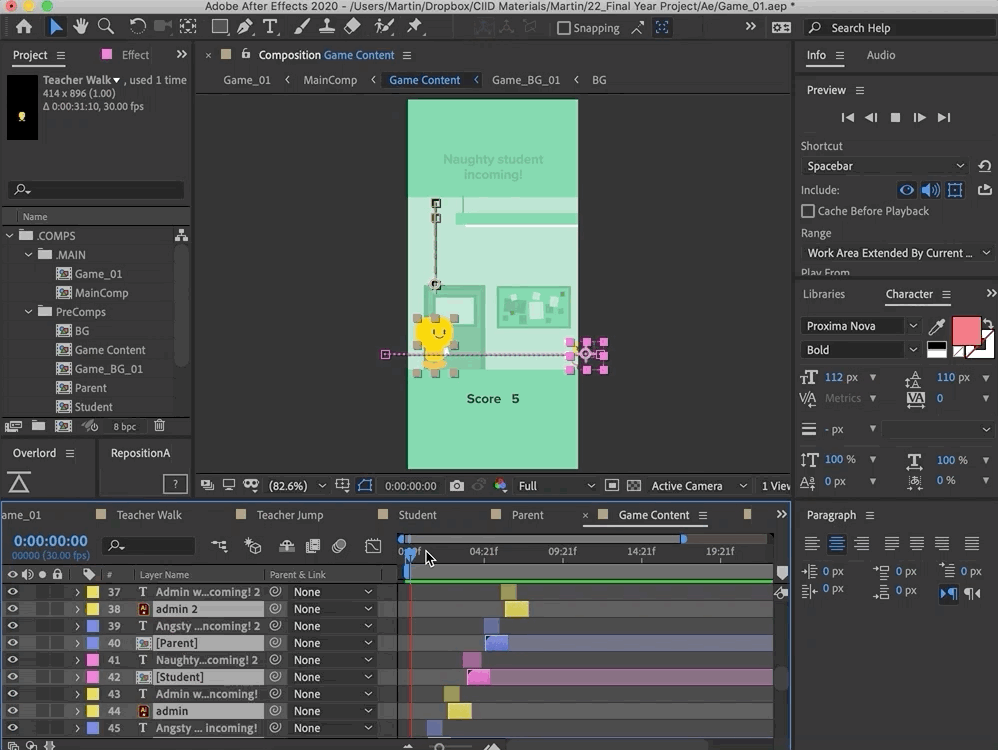
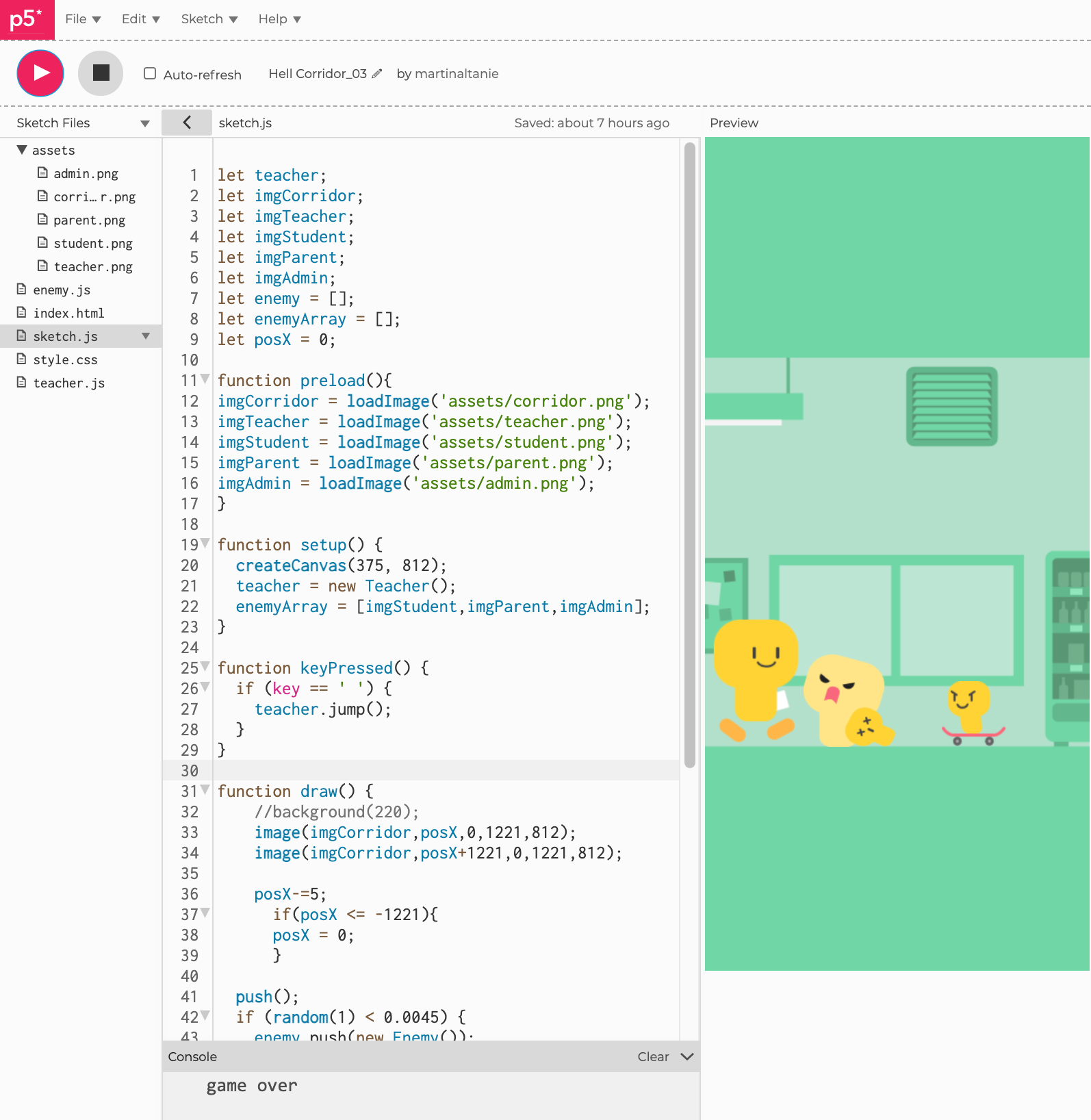
High Fidelity User Testing
The final phase was high-fidelity user testing, which I conducted with a teacher based in Costa Rica. This round focused on validating the full end-to-end experience and the emotional usability of both the app and the stress ball.
Key insights:
- The anonymity feature is essential; without it, teachers may hesitate to share sensitive issues, limiting the app’s value to management rather than supporting teacher wellbeing.
- The current stress-ball prototype still wasn’t soft or responsive enough to fully capture the emotional expression users expected.
- The current stress-ball prototype still wasn’t soft or responsive enough to fully capture the emotional expression users expected.


🌟 Outcome & Impact
- Validated Need: Through prototyping and testing, we confirmed that teachers value both anonymity and visibility, they want to share frustrations but also be heard in aggregated form.
- Tangible Expression: The physical stress ball proved to be more than a novelty, it gave teachers a real, embodied way to externalize emotions, making the invisible visible to themselves and others.
- Design Framework: Delivered a working prototype (digital + physical) that demonstrates how schools might implement emotional feedback loops at scale.
- Scalable Vision: The concept could serve as a foundation for broader well-being initiatives in educational institutions, from wellness programs to staff-engagement tools.
🪞 Key Learnings
Working on Ballrum sharpened my skills as a product designer in several ways:
- Systems Design: I learned to design not just an app, but a hybrid emotional ecosystem, where physical computing, peer feedback, and stakeholders insights inform each other.
- Empathy at Scale: Prototyping enabled me to ground abstract emotional needs into tangible actions and interactions.
- Rapid Experimentation: Moving from sketches → physical prototype → high-fidelity digital interactions under tight deadlines taught me to balance speed and sensitivity.
- Designing for Care: I deepened my belief that design can facilitate emotional safety, build trust, and create new channels for dialogue in organizations.
Potential Next Steps
If I had more time to continue developing Ballrum, I would focus on:
- Testing the prototype with a wider range of teachers across both public and private schools
- Collaborating with mental-health and somatic-therapy experts to design evidence-based stress-relief exercises
- Enhancing the data-collection layer to surface more meaningful emotional insights
- Evolving the stress ball into a fully wireless (Bluetooth) device
- Exploring alternative materials to improve comfort and squeezability
- Collaborating with mental-health and somatic-therapy experts to design evidence-based stress-relief exercises
- Enhancing the data-collection layer to surface more meaningful emotional insights
- Evolving the stress ball into a fully wireless (Bluetooth) device
- Exploring alternative materials to improve comfort and squeezability
